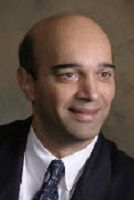Article
ACP: Blueprint for Substance Use Prevention and Treatment
Author(s):
Physicians can play a role in curbing substance misuse.

Internists have a role to play in stemming the nation’s opioid misuse, American College of Physicians (ACP) officials and panelists said a session at the group’s meeting in San Diego, California.
Part of the problem is inadequate access to treatment for substance abuse disorder, and in a position paper released at the meeting and published in Annals of Internal Medicine, the ACP’s Health and Public Policy Committee called for a multi-pronged approach.
That includes pressing for better insurance coverage of treatment, fewer restrictions on physicians who want to treat patients for addiction, and greater use of “drug courts” which focus on getting abusers into treatment as opposed to charging them with criminal offenses.
The group was uncertain as to whether decriminalizing marijuana use was entirely safe, and called for research on cannabis’ effects on children in states where marijuana has become legal.
In a panel discussion of the position paper, Nitin Damle, MD, MS, (photo) the ACP’s president called substance use disorders “treatable chronic health conditions that should be addressed through expansion of evidence-based public and individual health initiatives,” not the current approach of criminalization and incarceration.
Panelist Chwen-Yuen Angie Chen, MD, of Stanford University School of Medicine spoke of treating patients as a volunteer in a detox facility in New York City long before she finished medical school and of her sympathy for these patients.
“It was heart-breaking,” Chen said, “I’m relieved there has been a paradigm shift,” that now favors medical treatment.
That treatment includes prescribing buprenorphine which eases cravings for opioids and facilitates withdrawal. Unlike methadone, it does not require the patient to go to a clinic and take the drug under observation, avoiding both the stigma and the life-interrupting schedules involved in methadone maintenance.
Buprenorphine treatment cannot be given unless physicians complete a course in prescribing it and that requirement has reduced access to its use. Drug price and lack of coverage are also a barrier.
“It’s not inexpensive and patients can’t afford it,” said panelist Thomas Tape, MD, Chair of the ACP’s Board of Regents. Another problem is that the “buprenorphine is a safer opioid yet it is perceived as dangerous—doctors are nervous about prescribing buprenorphine.”
In California, Chen said, while the state’s MediCal program covers buprenorphine, private insurers generally do not.
The panelist agreed public pressure is needed to get more commercial insurers to cover buprenorphine treatment.
Asked what role physicians have played in inadvertently adding to the addiction epidemic, the panelists agreed that there has been overprescribing of opioids for pain—but that the pharma industry had over-promoted oxycodone and falsely said it was not addictive.
“Pharma sold us a bill of goods,” Chen said.
Pain was also seen as a “vital sign” that for a patient to be considered healthy, had to be eliminated.
The problem is more complicated though, she added and physicians are only part of it.
“It’s the fabric of society,” she said, one being torn by economic disruptions like job loss, and social disintegration.
“It was a perfect storm and we are swirling within it,” she said.
The full position paper published in Annals of Internal Medicine was written by Ryan Crowley, BSJ, and colleagues.



